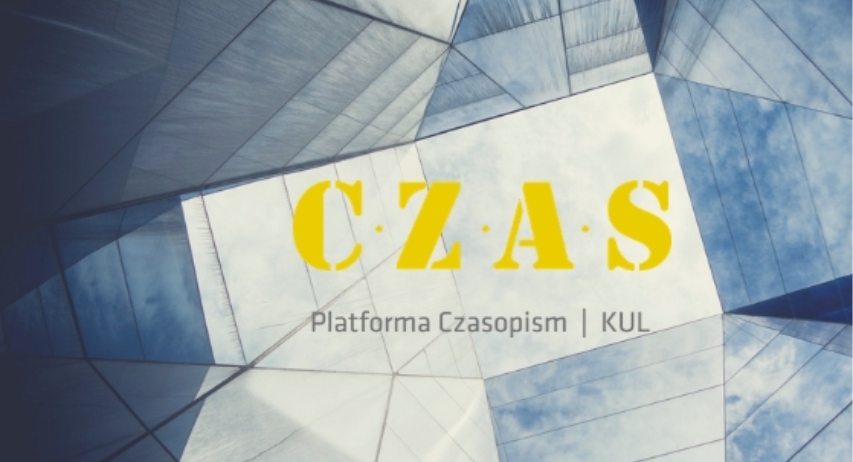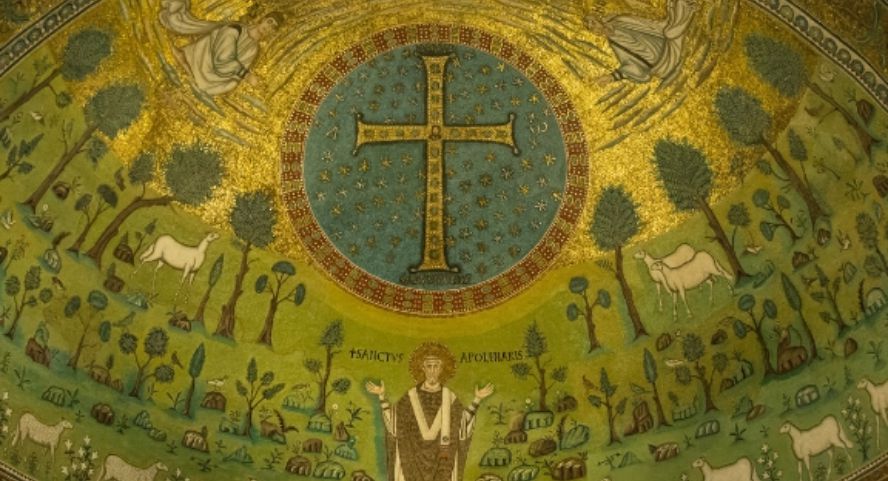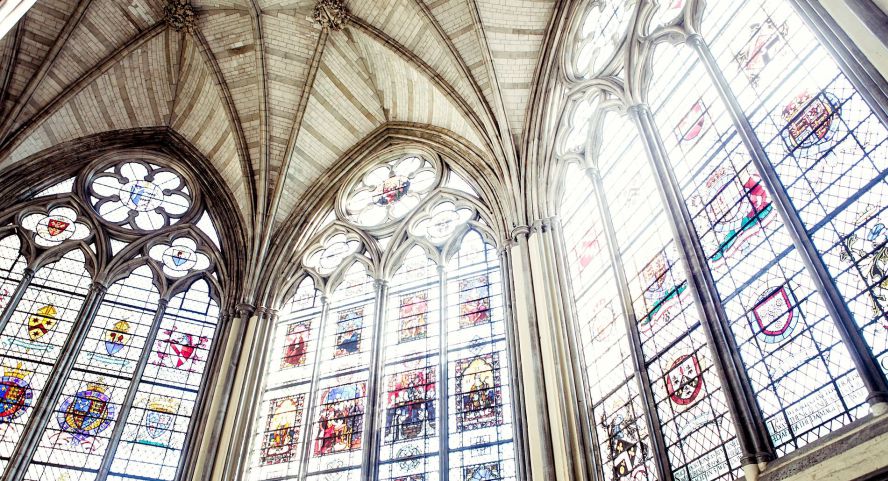Menacing Menas? Saint Menas as a Military Saint and Divine Trickster in his Greek Miracle Collection (BHG 1256-1269)
Julia Doroszewska
University of Warsaw , Polandhttps://orcid.org/0000-0002-7224-2418
Filip Doroszewski
Cardinal Stefan Wyszyński University in Warsaw , Polandhttps://orcid.org/0000-0002-2169-6161
Abstract
This study examines the Greek miracle collection of Saint Menas (BHG 1256–1269), investigating the literary construction of the saint as both a military protector and a divine trickster. The analysis highlights the inconsistencies in Menas’s portrayal, contrasting his literary depiction as a mounted avenger with non-literary evidence that emphasizes his role as a healer. Using comparative hagiographic analysis, the paper explores the influence of late antique principles of decorum, which shaped depictions of saints to avoid direct violence. The study delves into Menas’s punitive and protective miracles, analyzing their reliance on humour, trickery, and indirect retribution rather than overt combat. These narratives are contextualized within the broader framework of military saints, including Theodore, Demetrios, and Phoibammon, whose miracles also embody justice and protection through divine intervention. This paper reveals how such portrayals reflect evolving Christian attitudes toward violence, sanctity, and the supernatural. The findings contribute to the understanding of late antique religious imagination, showcasing how narrative ingenuity addressed both theological and societal needs in Christian antiquity.
Keywords:
cult of saints, St Menas, saint Theodore, saint Demetrios, saint Phoibammon, military saintSupporting Agencies:
National Science Centre in PolandReferences
Encomium in Sanctum Mercurium Coptum, in: Weidmann F., Encomium on St. Mercurius the General (M 588, ff. 27vb22‑31r), in: Homiletica from the Pierpont Morgan Library: Seven Coptic Homilies attributed to Basil the Great, John Chrysostom, and Euodius of Rome, ed. L. Depuydt, Louvain 1991.
Encomium in Sanctum Theodorem Graecum (BHG 1765c), ed. A. Sigalas, Des Chrysippos von Jerusalem Enkomion auf den hl. Theodoros Teron, Leipzig – Berlin 1921.
Encomium in Sanctum Theodorem Graecum (BHG 1765c), tr. J. Haldon, Chrysippos of Jerusalem, A Tale of Two Saints: The Martyrdoms and Miracles of Saints Theodore ‘The Recruit’ and ‘The General’, Liverpool 2016.
Iohannes Malalas, Chronographia, ed. L. Dindorf, Ioannis Malalae Chronographia, Bonn 1831; J. Thurn, Ioannis Malalae Chronographia, Berlin 2000, tr. E. Jeffreys – M., Jeffreys – R. Scott, The Chronicle of John Malalas: A Translation, Sydney 1986.
Miracula Apae Phoibammonis Copta, tr. K. Verrone, Mighty Deeds and Miracles by Saint Apa Phoebammon: Edition and Translation of Coptic Manuscript M 582 ff. 21r-30r in the Pierpont Morgan Library, Brown University 2002 (diss.).
Miracula S. Menae Graeca, Zhitie prepodobnago Paisiia Velikago i Timoḟeia patriarkha Aleksandriĭskago poviestvovanie o chudesakh'' sv. Velikomuchenika Miny, ed. I. Pomialovskiĭ, Saint Petersburg 1900.
Miracula Sancti Mercurii Copta, ed. W.C. Till, Koptische Heiligen- und Martyrlegenden, v. 1, Rome 1935.
Miracula Sancti Demetrii, collection II (BHG 499‑516k), tr. P. Lemerle, Les plus anciens recueils des miracles de Saint Démétrius et la pénétration des Slaves dans les Balkans, Paris 1981.
Miracula Sanctae Theclae (BHG 1718), tr. G. Dagron, Vie et miracles de sainte Thècle, Bruxelles 1978.
Passio Sancti Menae Graeca (BHG 1254), ed. K. Krumbacher, Miscellen zu Romanos, Munich 1907.
P’awstos of Byzantium, The Epic Histories, tr. N.G. Garsoïan, The Epic Histories Attributed to P’awstos Buzand (Buzandaran Patmut’iwnk’), Cambridge 1989.
Romani Melodi Cantica, ed. P. Maas – C. Trypanis, Sancti Romani Melodi Cantica. Cantica dubia, Berlin 1970.
Anderson W., Menas Flasks in the West: Pilgrimage and Trade at the End of Antiquity, “Ancient West & East” 6 (2007) p. 221‑243.
Bangert S., Menas Ampullae, a Case Study of Long-Distance Contacts, “Reading Medieval Studies” 32 (2006) p. 27‑33.
Betz H., The Greek Magical Papyri in Translation, Including the Demotic Spells, v. 1: Texts, Chicago – London 1986.
Davis S.J. The Cult of Saint Thecla: A Tradition of Women’s Piety in Late Antiquity, Oxford 2001.
Delehaye H., Les légendes grecques des saints militaires, Paris 1909.
Delehaye H., L’invention des reliques de S. Ménas á Constantinople, “Analecta Bollandiana” 29 (1910) p. 117‑146.
Déroche V., “Tout d’un Coup”: L’épiphanie masquée dans les recueils de miracles de l’Antiquité Tardive, in: Dōron Rodopoikilon: Studies in Honour of Jan Olof Rosenqvist, ed. D. Searby – E. Balicka-Witakowska – J. Heldt, Uppsala 2012, p. 147‑157.
Doroszewska J., Trickster Saints and Their Manifestations and Miracles in Late Antique Hagiography (forthcoming).
Drescher J., Apa Mena: A Selection of Coptic Texts Relating to St. Menas, Edited, with Translation and Commentary, Le Caire 1946.
Efthymiadis S., Greek Byzantine Collections of Miracles. A Chronological and Bibliographical Survey, “Symbolae Osloenses” 74 (1999) p. 195‑211.
Efthymiadis S., Collections of Miracles (Fifth-Fifteenth Centuries), in: The Ashgate Research Companion to Byzantine Hagiography, v. 2: Genres and Contexts, ed. S. Efthymiadis, Farnham – Burlington 2014, pp. 103‑142.
Gager J., Curse Tablets and Binding Spells from the Ancient World, New York – Oxford 1999.
Graf F., Magic in the Ancient World, Cambridge – London 1997.
Grau M., Refiguring Theological Hermeneutics: Hermes, Trickster, Fool, New York 2014.
Grossmann P., Abu Mina: A Guide to the Ancient Pilgrimage Center, Cairo 1986.
Grossmann P., The Pilgrimage Center of Abû Mînâ, in: Pilgrimage and Holy Space in Late Antique Egypt, ed. D. Frankfurter, Leiden 1998, p. 281‑302.
Grossmann P., Abu Mina, Ägypten: Das Pilgerzentrum, “e-Forschungsberichte des Deutsche Archäologische Institut” 1 (2015) p. 1‑3.
Grotowski P., Arms and Armour of the Warrior Saints: Tradition and Innovation in Byzantine Iconography (843‑1261), Leiden 2010.
Hodak S., Coptic Literature as a Source for Coptic art, in: Pharaonen, Mönche und Gelehrte. Auf dem Pilgerweg durch 5000 ägyptische Geschichte über drei Kontinente. Heike Behlmer zum 65. Geburtstag, ed. D. Atanassova – F. Feder – H. Sternberg el-Hotabi, Wiesbaden 2023, p. 361‑393.
Hyde L., Trickster Makes This World: Mischief, Myth, and Art, New York 1998.
Hynes W., Mapping the Characteristics of Mythic Tricksters: A Heuristic Guide, in: Mythical Trickster Figures: Contours, Contexts, and Criticisms, ed. W. Hynes – W. Doty, Tuscaloosa 1993, p. 33‑45.
Kaufmann C., Zur Ikonographie der Menas-Ampullen, Cairo 1910.
Kiss Z., Ampulla, The Coptic Encyclopedia, v. 1, New York – Toronto 1991, p. 116‑118.
Kiss Z., Menas i Afrodyta. “Dewocjonalia” z sanktuarium świętego Menasa, “Vox Patrum” 35 (2015) p. 231‑248.
Lambert C. – Pedemonte Demeglio P., Ampolle devozionali ed itinerari di pellegrinaggio tra IV e VI secolo, “Antiquité Tardive” 2 (1994) p. 205‑231.
Lenski N., The Significance of the Edict of Milan, in: Constantine: Religious Faith and Imperial Policy, ed. E. Siecienski, London 2017, p. 27‑56.
LiDonnici L., The Epidaurian Miracle Inscriptions: Text, Translation, and Commentary, Atlanta 1995.
Miceli S., Il demiurgo trasgressivo. Studio sul trickster, Palermo 2000.
Narro Á., Tipologia de los milagros griegos de San Minás (BHG 1256‑1269), in Mite i miracle a les literatures antigues i medievals, ed. M. Movellán Luis – J.J. Pomer Monferrer, Tarragona 2018, p. 99‑110.
Papaconstantinou A., Le culte des saints en Égypte des Byzantins aux Abbasides. L’apport des inscriptions et des papyrus grecs et coptes, Paris 2001.
Pedersen A. – Oehrl S., Late Viking-Age Dragon-Slayers – Two Unusual Urnes-style Brooches from Sjælland, Denmark, “Medieval Archaeology” 65/2 (2021) p. 322-367.
Peeters P., Le Tréfonds Oriental de l’hagiographie Byzantine, Subsidia Hagiographica 2, Bruxelles 1950.
Piwowarczyk P., Prolegomena to the Study of the Miracles of St Menas, „Vox Patrum” 94 (2025) p. 35-64.
Pucci P., Odysseus Polutropos: Intertextual Readings in the Odyssey and the Iliad, Ithaca 1987.
San Nicolò M., Σπαθάριος, in: Paulys Realencyclopädie der classischen Altertumswissenschaft, Series 2, v. 3/6, Stuttgart 1929, c. 1545‑1546.
Silvano L. – Varalda P., Per l’edizione dei Miracula sancti Menae (BHG 1256‑1269), “Philologia Antiqua” 12 (2019) p. 51‑85.
Stafford G., Evidence for Female Pilgrims at Abu Mina, in: Transmitting and Circulating the Late Antique and Byzantine Worlds, ed. M. Ivanova – H. Jeffery, Leiden 2019, p. 11‑43.
Thompson S., Motif-Index of Folk-Literature: A Classification of Narrative Elements in Folktales, Ballads, Myths, Fables, Mediaeval Romances, Exempla, Fabliaux, Jest-books, and Local Legends, Copenhagen 1955.
Tucker E., Magic Invisibility, Motif D1980, in: Archetypes and Motifs in Folklore and Literature: A Handbook, ed. J. Garry – El-Shamy, New York 2017, p. 160‑165.
Varalda P., Il ricco Eutropio e i piatti. La versione greca di uno dei Miracula sancti Menae (BHG 1258), “Bollettino della Badia Greca di Grottaferrata” 18 (2021) p. 207‑250.
Walter C., The Warrior Saints in Byzantine Art and Tradition, London 2016.
Wipszycka E., Philoxenite: Pilgrims on the road to Abu Mina, in Philoxenite on the Lake Mareotis: a town for pilgrims built under Justinian, ed. T. Derda – M. Gwiazda, Leuven – Paris – Bristol, forthcoming.
Woodfin W., An Officer and a Gentleman: Transformations in the Iconography of a Warrior Saint, “Dumbarton Oaks Papers” 60 (2006) p. 111-143.
Zieliński K., Odysseus-Trickster and the Issue of the Compatibility of the Image of the Hero with Its Function in the Traditions of the Oral Epic, “Studia Religiologica. Zeszyty Naukowe Uniwersytetu Jagiellońskiego” 53/3 (2020) p. 181‑202.
University of Warsaw https://orcid.org/0000-0002-7224-2418
Cardinal Stefan Wyszyński University in Warsaw https://orcid.org/0000-0002-2169-6161
License

This work is licensed under a Creative Commons Attribution-NoDerivatives 4.0 International License.
Papers published in Vox Patrum are covered by the Attribution-NoDerivatives 4.0 International (CC BY-ND 4.0) licence. Authors and users can use published works licensed under the CC-BY-ND since 2018. For earlier publications, copyrights are available under fair use rights in accordance with the Act of February 4, 1994 on copyrights and related rights.







